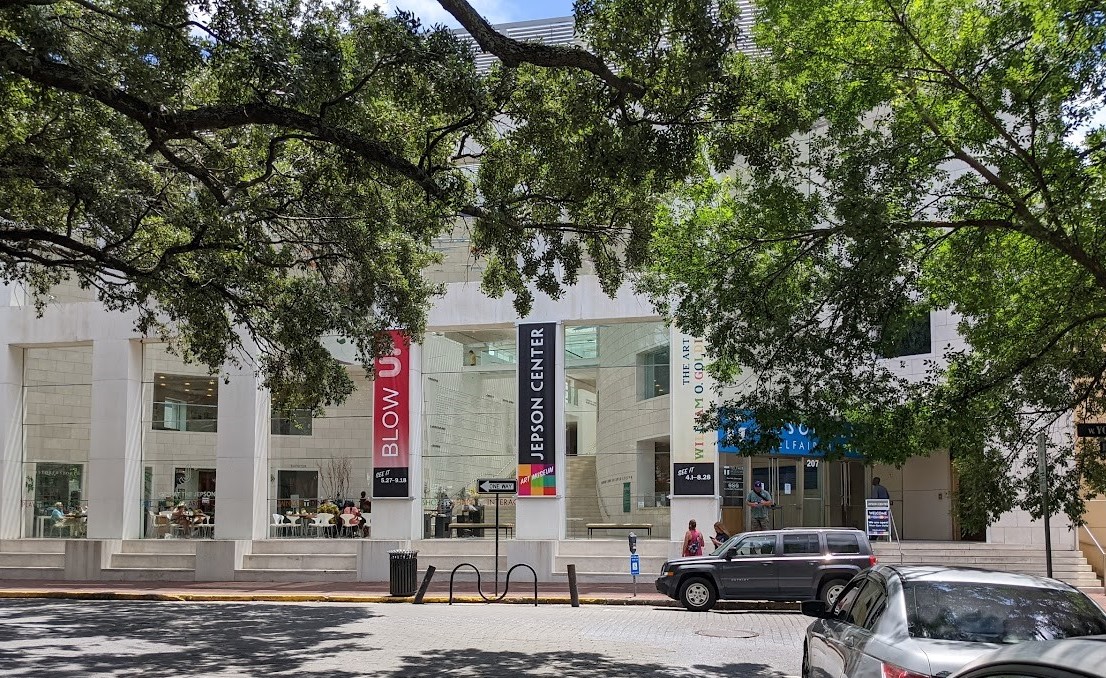I just had a museum experience that blissed me out, from beginning to end!
I have to admit that I didn’t expect it. Contemporary art isn’t usually my first-choice go-to and, as I approached the gleaming-white, angular, state-of-the-art museum building, I thought it looked out of place, surrounded as it is by classic Savannah architecture.
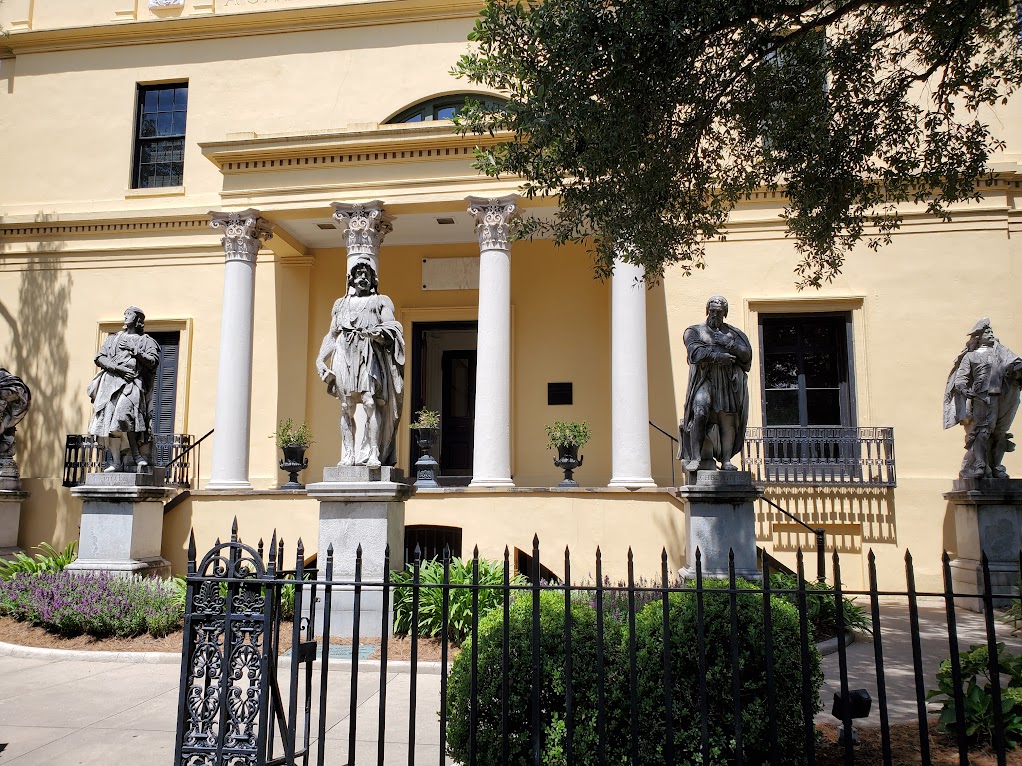
Telfair Academy, Savannah GA 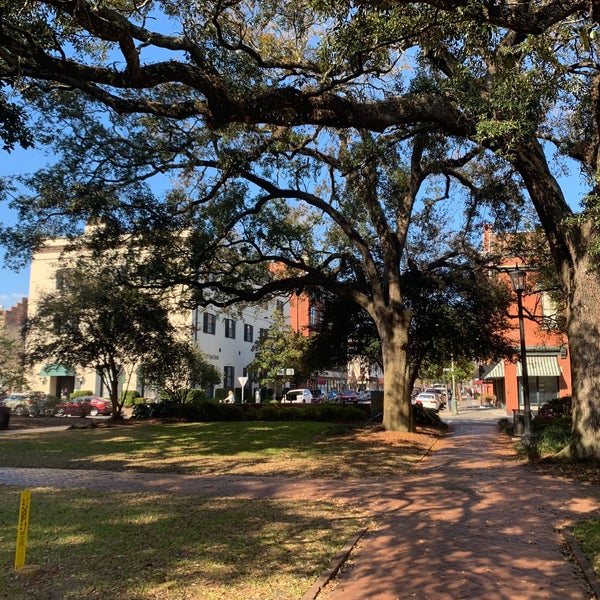
Telfair Square, Savannah GA 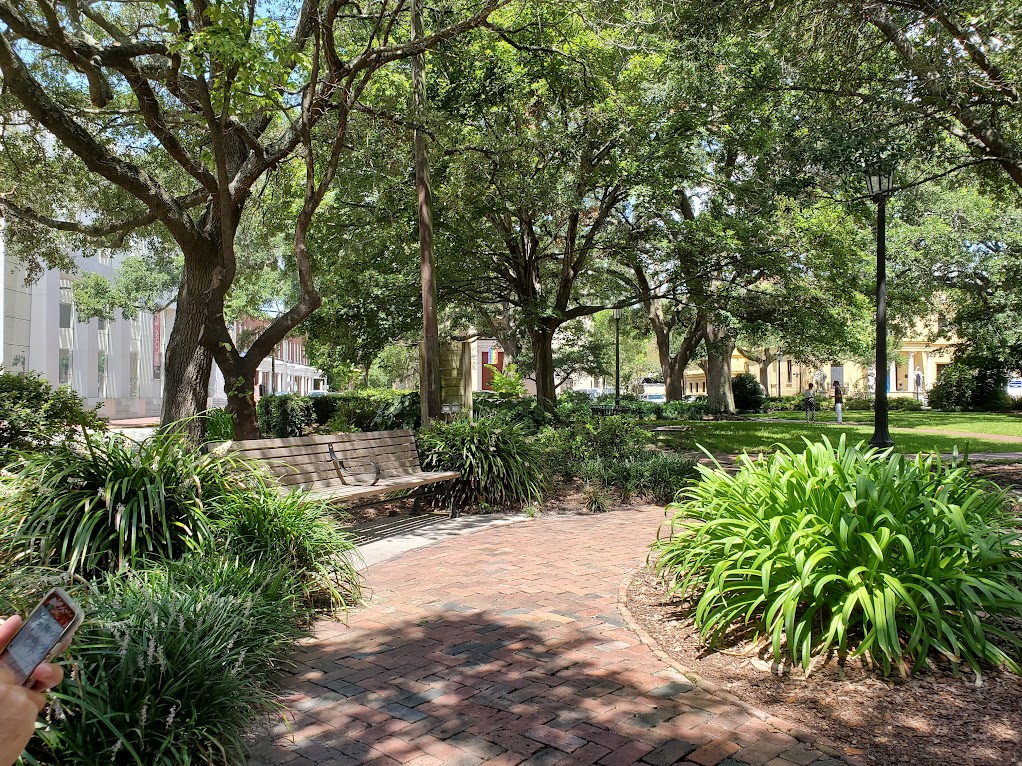
Telfair Square, Savannah GA
Then again, how do you design a new museum to fit into a National Historic Landmark District — an area that was planned in 1733 — a neighborhood defined by a grid of streets punctuated by tree-shaded urban squares? The Jepson Center stands in the heart of Savannah’s Historic District, a few steps around Telfair Square from the Telfair Academy, the oldest public art museum in the South, built in 1818–19.
Stunning architecture, I thought, but surely it wants broad lawns, a super-sized Claes Oldenburg sculpture near the entrance, and a parking deck …
Then I stepped inside.
Light-filled in all the right places, a slat-laced ceiling, and large windows. The windows, of course, offer interaction with the surrounding Historic District.
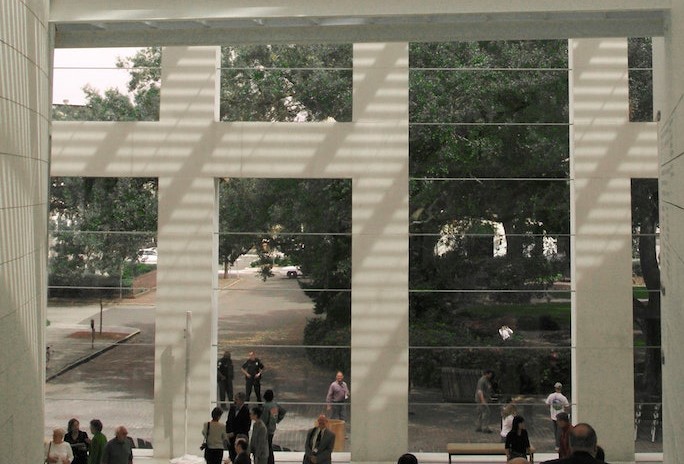
The Jepson Center‘s design reflects architect Moshe Safdie’s avid interest in natural illumination and the ever-shifting patterns created as light interacts with structure. Philosophically, the building’s design reflects the belief that the museum of the 21st century is communal, transparent, inviting—in short, Safdie says, it reflects “a new spirit which speaks of the openness that contemporary society aspires to.”
In designing the Jepson Center, Safdie’s aim was to provide Savannah with a truly iconic building that, in the architect’s words, is “vital, contemporary, appropriate to the expression of art to come … and a building you cannot conceive of anywhere else but Savannah.”

Upon closer study, I realized the design actually does harmonize with Savannah’s urban fabric, respecting the established grid of the historic district. The height and mass of the museum relate to the surrounding structures. The glass façade on York Street is framed by two architectural ‘screens’ — a modern take on classical columns, a nod to the neo-classical styling of neighboring structures. The screens break the 120-foot wide frontage into bays of less than 60 feet, to conform with the Historic Savannah guidelines, and the expanse of glass invites engagement with the tree-lined Telfair Square and surrounding buildings.
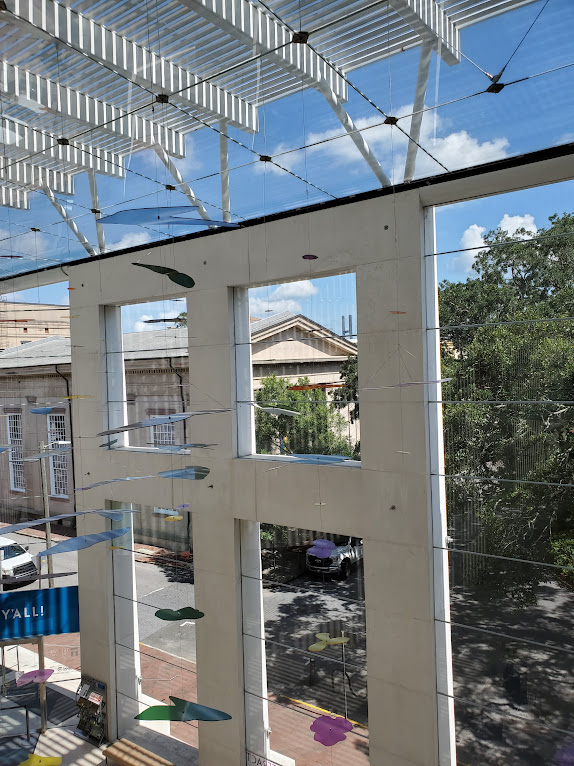
Modest in scale but grand in feel, the glass-fronted foyer hints at the experience to come: art and architecture reinforcing one another. That interaction is introduced here, in the three-story atrium, with Katniss, a subtly dynamic sculpture by Savannah-based artist Katherine Sandoz. Suspended in layers overhead,108 translucent acrylic elements cast colored patterns on the smooth, creamy Portuguese limestone walls and on the floor, shapes that dance and shift in gentle currents of air and ever-changing natural light.
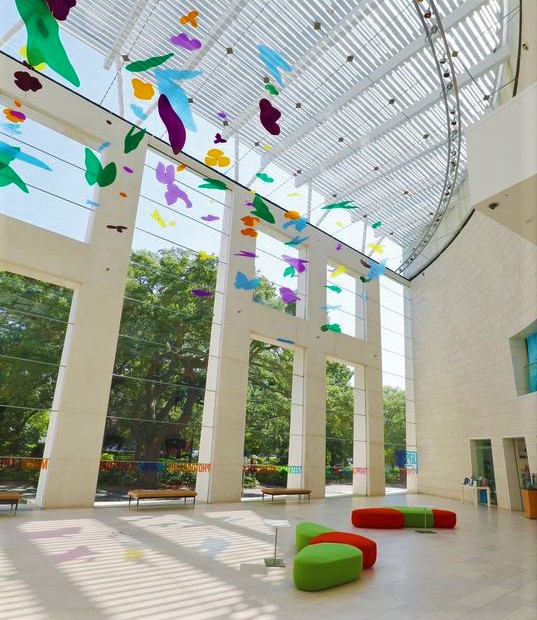
The foyer and central stair are roofed by a trellised glass-and-steel structure, so the pastel-tinted reflections from Katniss play on the curved wall that embraces the lobby, mingling with the wall-washing patterns cast by the ribbed structure of the ceiling.
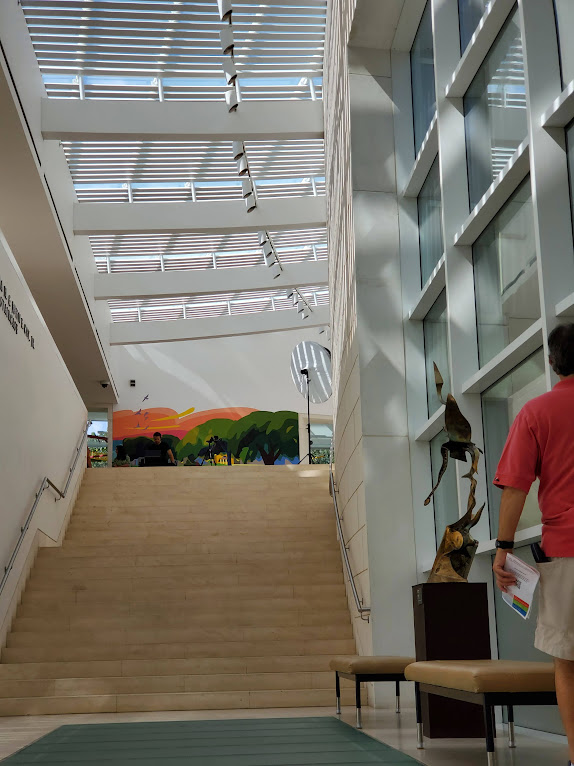
Central stairs, mid-morning, late-July 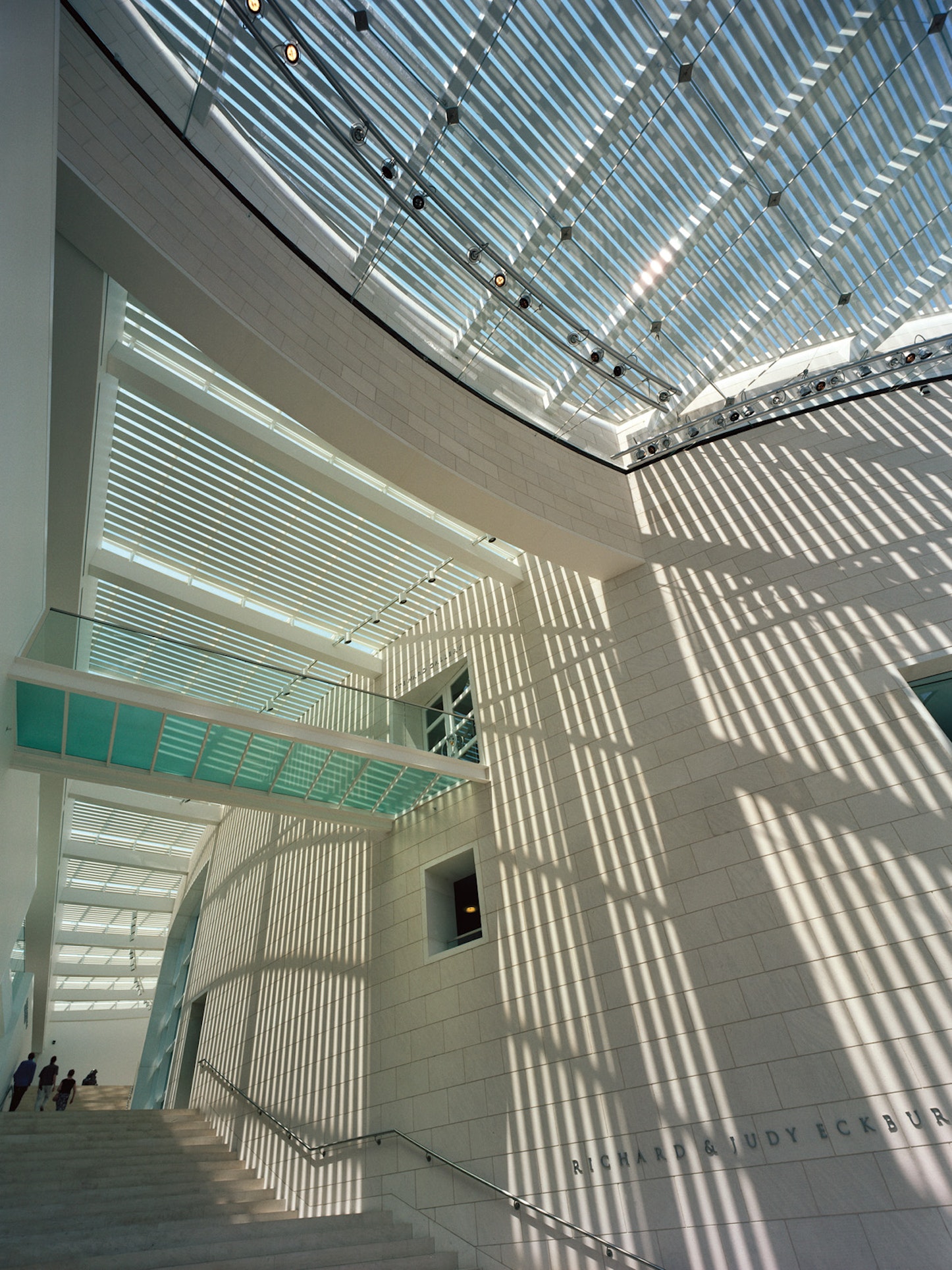
Central stairs, a different time, a different day
I suspect there are those who are disoriented by the stripey effect of the trellised ceiling but, for the most part, I found the dynamic impact of light and shadow to be at once dramatic and playful.
Rest assured, the gallery spaces are enclosed, so appreciation of artwork is not challenged by unpredictable lighting – with a few exceptions. In one open hallway, pottery and small sculptures presented in glass display cases are difficult to see and the signage hard to read, as a result of the reflections. For example, shown below, Frederick MacMonnies’ Young Faun with Heron, was behind reflected bars.
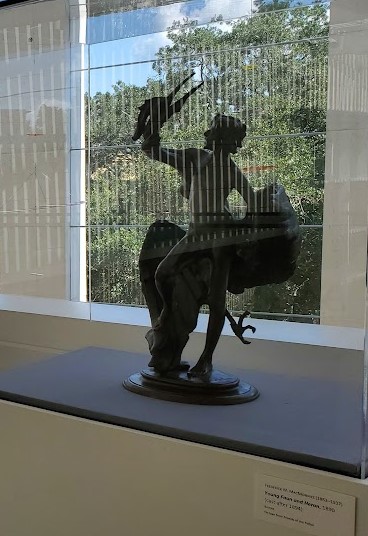
Frederick William MacMonnies (American, 1863-1937)
Young Faun with Heron, 1889–90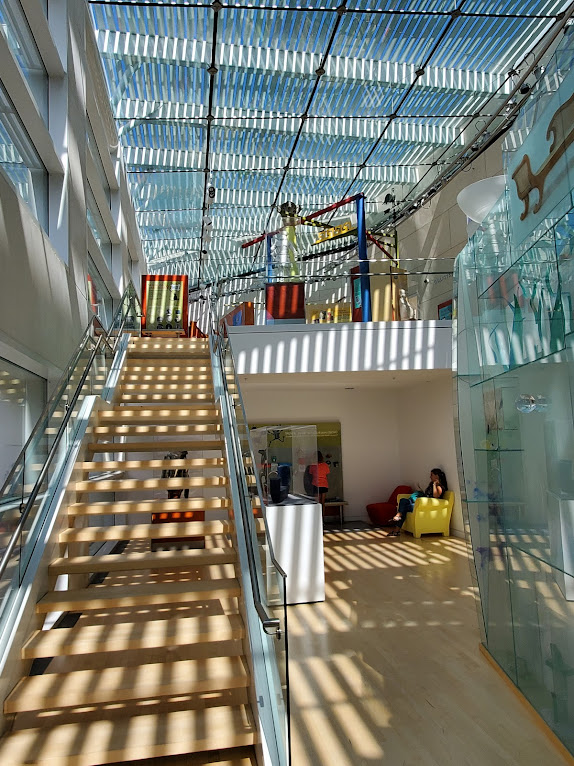
Stairway to 3rd Floor Artzeum.
And on the 3rd floor, what is called the Artzeum — perhaps the best interactive children’s learning space I’ve ever seen in an art museum — is cheerfully bathed in light, but also in stripes. Fun and stimulating for a child, perhaps, but a bit tiresome for me!
Overall, the Jepson Center is a fascinating architectural delight. It’s a must-see for anyone interested in thoughtful, solution-oriented, state-of-the-art museum design.
Not to mention the exhibitions! Which I shall, in another post …
Hmmm … maybe it’s time to plan a little trip …
Jepson Center, Telfair Museums
207 W. York St., Savannah, GA 31401
912.790.8800
Art Things Considered is an art and travel blog for art geeks, brought to you by ArtGeek.art — the only search engine that makes it easy to discover more than 1600 art museums, historic houses & artist studios, and sculpture & botanical gardens across the US.
Just go to ArtGeek.art and enter the name of a city or state to see a complete catalog of museums in the area. All in one place: descriptions, locations and links.
Use ArtGeek to plan trips and to discover hidden gem museums wherever you are or wherever you go in the US. It’s free, it’s easy to use, and it’s fun!
© Arts Advantage Publishing, 2022
